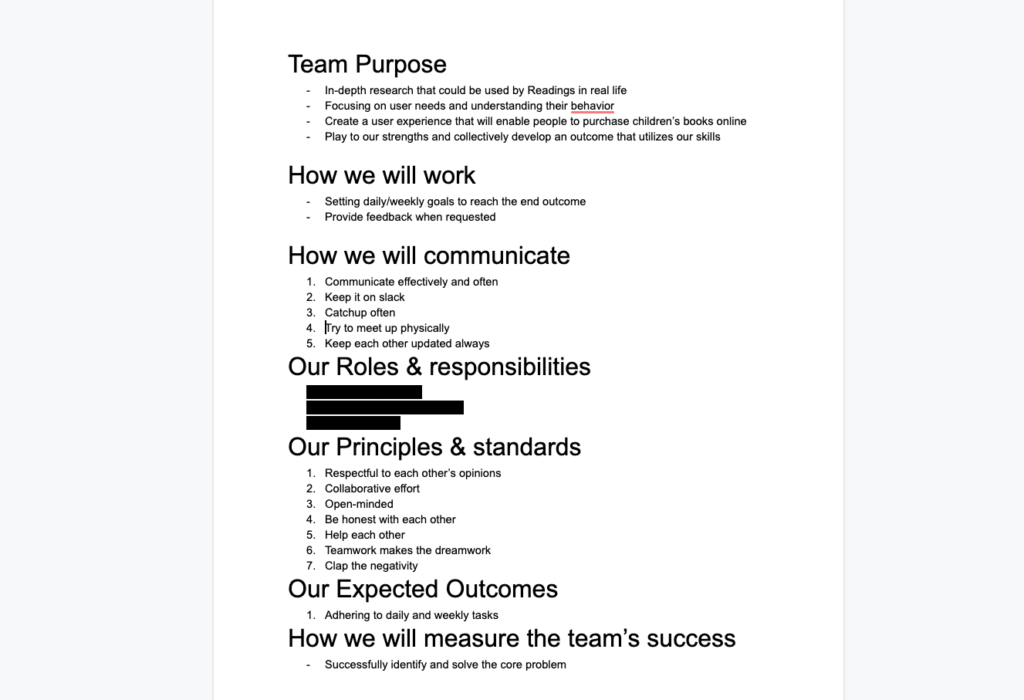How our team collaborates seamlessly from the comfort of our homes.
Naturally, I didn’t think this would be possible. I thought the efficacy of the collaboration and potency of the research would be drastically compromised — but how wrong I was.
This is actually working. Almost three weeks have passed, and I can safely say our team has been churning out ideas as if we’re standing in front of the same whiteboard. We’ve been screening and recruiting users for research with the effectiveness of coffee meet-ups. The essence of our collaboration has boiled down to three unspoken laws: plan, communicate and adapt. Here’s how we do it.
Note that for our work, we have been using Slack, Zoom, G-Drive, Trello & Miro which are a combination of free and freemium tools.
1. Conducting daily standups
Teams need transparency and open communication. Giving a quick rundown of everything you’ve done the day before, what you plan to do today and announcing possible roadblocks sets the tone for the day ahead. They serve as a verbal catalyst for productivity.
- Make it inclusive. Timebox standups so everyone has a chance to speak and the team can get to their outcomes quicker.

2. Note-taking during brainstorms
If there’s something important to discuss or a poignant piece of insight you need to share — jot this down in writing.
- Share key insights that people need to reference. Our team writes down the goal of the activity on our Miro board and conducts research findings in an artboard adjacent. We also post any articles or videos on the group Slack channel or G-Drive to ensure we’re on the same page before deep-diving into a topic.
- Write down your schedule. You can explain over audio, but connections are laggy and people forget. Write your daily team goals and delegate with a sticky-note who’s assigned to what task. We use Trello as a digitised kanban to give us a clearer sense of direction when working as a team.

3. Facilitate
A team without direction is a team destined to fail. It’s important to manage the workload during sprints to stay on track. When the team is conducting deep-work and silence has set in, check-in every 15 minutes to make sure directions are aligned with the goal.
- Keep the team informed, and speak slowly. If someone can’t grasp a certain topic or idea, take the time to revisit this with the individual. Present information in digestible chunks and pause for questions.
- Ask if there are disagreements. Amidst the silent pauses and slow connections, it’s hard to tell when uncertainty sinks in online. When there’s a key decision to be made, take the time to listen and consider any objections.

4. Leverage your existing networks
Finding interviewees for remote research is a daunting task. Leveraging off existing connections and advertising surveys on social platforms can generate traction to the right audience.

5. Be flexible
Hiccups are inevitable when transitioning to a new workflow. You can take preventative measures by anticipating and planning ahead.
- Give people the freedom to work when they want, how they want. It’s important to promote flexible workflows and working hours for life’s curveballs. We ensure we regroup our findings into a single tool (we use Miro) for group discussions.
- Expect to use multiple tools and workflows. A single piece of software is unlikely to solve all of your needs, especially during brainstorming and design phases. Keeping working files from programs inside a communal G-Drive offers flexibility for others to jump in and make tweaks.
- Some exercises will take longer than expected. Because people are still familiarising themselves with a new set of tools and method of learning, activities can become slower than they would in person. At the end of a sprint, see if cursors are still moving in the collaborative board and ask if people need extra time.

6. Offer and accept feedback
This one goes without saying. Spirits are low and motivations levels are often down online, so actively offer praise and constructive criticism to your peers.
- Conduct weekly retros with your team. Placing emphasis on areas that the team can grow and where it glowed is a great foundation to iterate and build strong chemistry within a group.



No comments.